blackkite
Don't laugh, don't cry, don't even curse, but.....
- Joined
- 31 May 2007
- Messages
- 8,597
- Reaction score
- 6,844
Last edited:




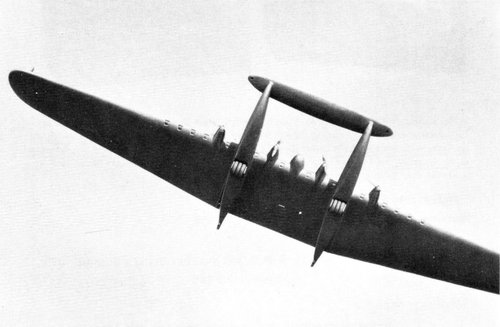
| Aircraft | year | engine | length in m | span in m | wing area im sqm | net weight in kg | payload in kg | seats | speed in km/h | range in km |
|---|---|---|---|---|---|---|---|---|---|---|
| J1000 | 1924 | 4 x 735kW | 24,00 | 80,00 | 600 | 19500 | 16500 | 8+80 | 190 | 1700 |

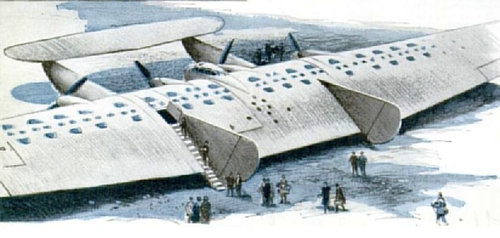
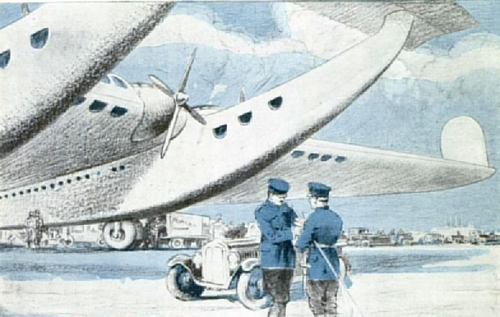
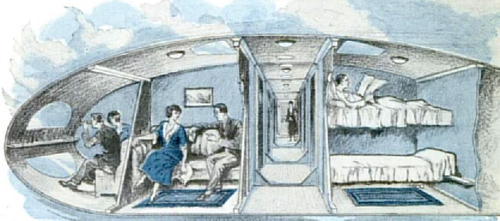

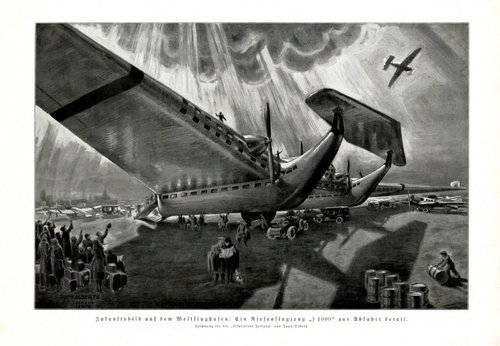
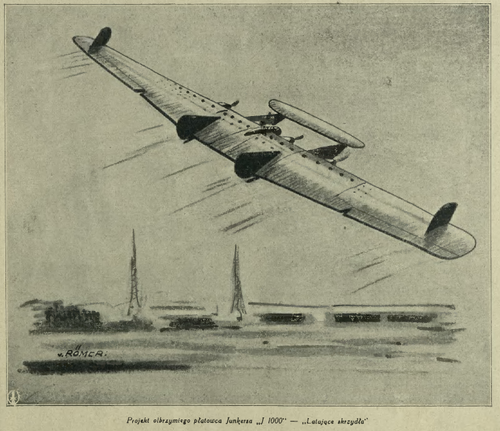
This aircraft is emphatically not a "flying wing", as it is sometimes described and this topic is currently titled. It has screamingly obvious twin fuselages and canard foreplane. Can the phrase be removed from the title, please?
In the 1930s 'flying wing' and some related terms were used quite differently. I think you are retrojecting modern (post WWII American) usage of the term onto a period where it was much looser.This aircraft is emphatically not a "flying wing", as it is sometimes described and this topic is currently titled. It has screamingly obvious twin fuselages and canard foreplane. Can the phrase be removed from the title, please?
Although the patent is considered in many publications as a guide to the flying wing aircraft, the fact that Junkers ultimately describes a flying wing aircraft is questioned by other sources.
...
Flying wing?
Although the principle drawings of the patent specification do not show any tail units, there are doubts in some sources that Junkers really depicted a wing-only design. Rather, z. B. according to Pawlas [5] assume that the term wing-only patent, which only became more and more common in the 1930s, takes something for the Junkers aircraft that was not mentioned at all in the patent application.
However, the actual intention can be inferred from the text of the application, namely all parts of the aircraft which do not contribute to buoyancy and cause resistance, such as, for. As engines, fuel tanks, struts, etc., to take out of the air stream and to lay them in a correspondingly shaped, thick wing with large cavities. Tail units and other stabilization or control organs are not mentioned. If the patent had specifically targeted the flying wing, this information would have been essential. The conclusion is that the patent did not describe a special new aircraft type (flying wing), but only one component of an aircraft, namely the wings.
When you produce an informed contemporary source describing this plane or any other like it as a "flying wing", or defining a "flying wing" in terms which include twin fuselages and a foreplane, I will take that claim seriously - but not until then.
When you produce an informed contemporary source describing this plane or any other like it as a "flying wing", or defining a "flying wing" in terms which include twin fuselages and a foreplane, I will take that claim seriously - but not until then.
When you produce an informed contemporary source describing this plane or any other like it as a "flying wing", or defining a "flying wing" in terms which include twin fuselages and a foreplane, I will take that claim seriously - but not until then.
The Northrop X-216H of 1929 had twin booms and a tailplane, and was referred to as a "flying wing." Sadly the Aviation Week and Flight archives are no longer accessible, but you can get some hints of that from 1930 articles here:
Aviation Week | Aviation Week Search results for: "flying wing"
Search the complete Aviation Week archive. Explore every issue we have ever published: find every article, photo, story, interview, pictorial, advertisement, and more.archive.aviationweek.com
Yes that is true. However Northrop did not put passenger cabins, main undercarriage and other sundries in his twin booms. So - no banana.
and, no, I'm nowhere near interested enough to go digging to find them
and, no, I'm nowhere near interested enough to go digging to find them
Well I have long been so, and I have long done so, so I fear that cannot believe a word of your unsupported and apparently myth-led opinions.
That Aviation Week link returns the informative message, No Search results found for ""Flying wing"". You presumably mean the Northrop beasite, which does not have any of the J1000 style fuselage gubbins in its supporting booms (i.e. it actually fulfils the Junkers diktat that everything which does not create lift is housed within the parts that do). Why you are so obsessed with promoting untenable rubbish I have no idea. For my part, I believe that other readers are more likely to be interested in evidence-based reality, and our moderators seem to concur.Except I posted a link to a 1930 issue of Aviation Week where a vehicle was clearly called a "flying wing" that matches the configuration of the J1000, just backwards. Why you are so obsessed over this debate, I've no idea... and no further interest in engaging with it. The fact is clear to those willing to pay attention: the term "flying wing" meant something different circa 1930 than it means today.
That Aviation Week link returns the informative message, No Search results found for ""Flying wing"".

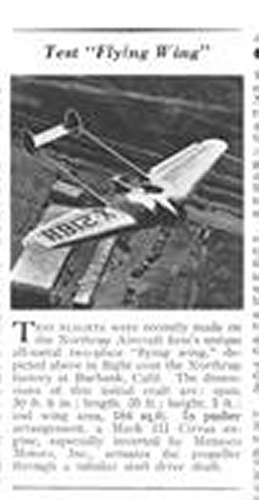
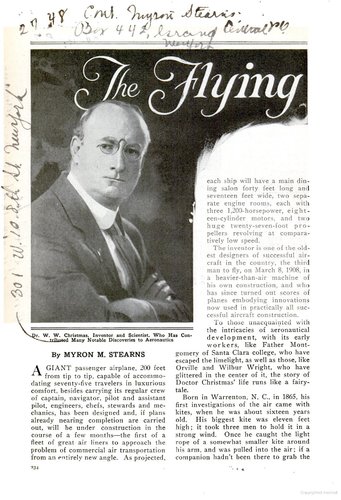
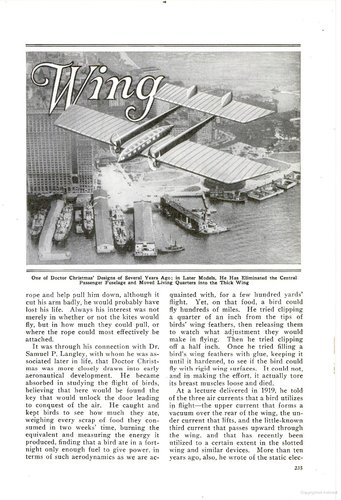
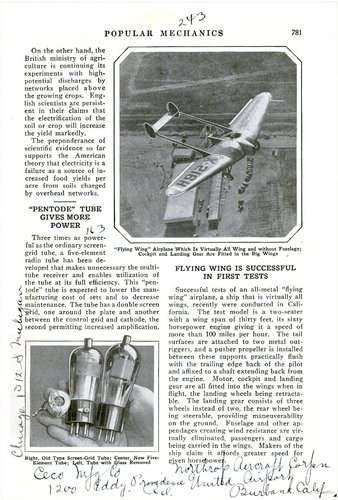
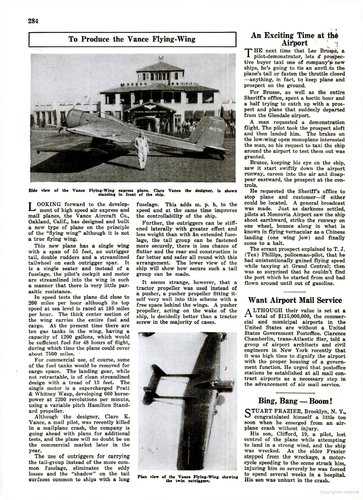
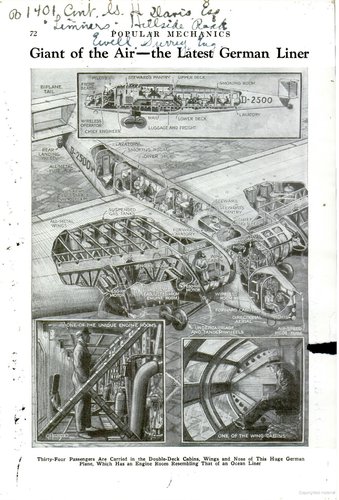
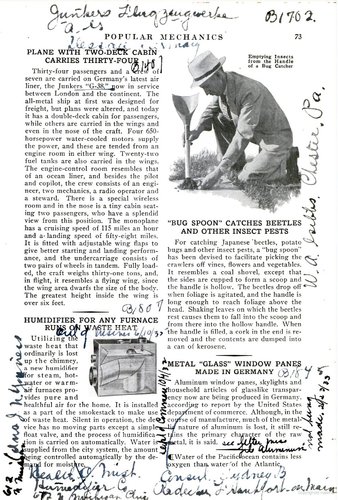
I enjoyed reading what doesn't exist! I wonder if a BWB is a flying wing?????
So... yeah. before WWII, "flying wing" was a much more expansive descriptor of aircraft.
porting evidence that the writer's contemporary (n.b.) caution was unjustified.
So... yeah. before WWII, "flying wing" was a much more expansive descriptor of aircraft.
I don't think so. One needs to examine the evidence, not merely present it.
Perhaps we can agree, that even in the world of aviation, terms are not always pinned down for all times,
but may be changing during the years ?
About the J1000 called a flying wing, I found another example in the "Illustrierte Technische Wörterbücher,
Band XVII, Luftfahrt" (illustrated technical dictionary, volume XVII, aviation) by Alfred Schlomann, 1932.
You can find then current aviation-related terms in four languages there, explained by a small graphic and
the one, which is used for the term "flying wing" actually looks like the J1000.
I have presented evidence that shows that people *did* refer to non-flying-wings as "flying wings."
So "not a true flying wing" and not mentioning "flying wing" at all ...
